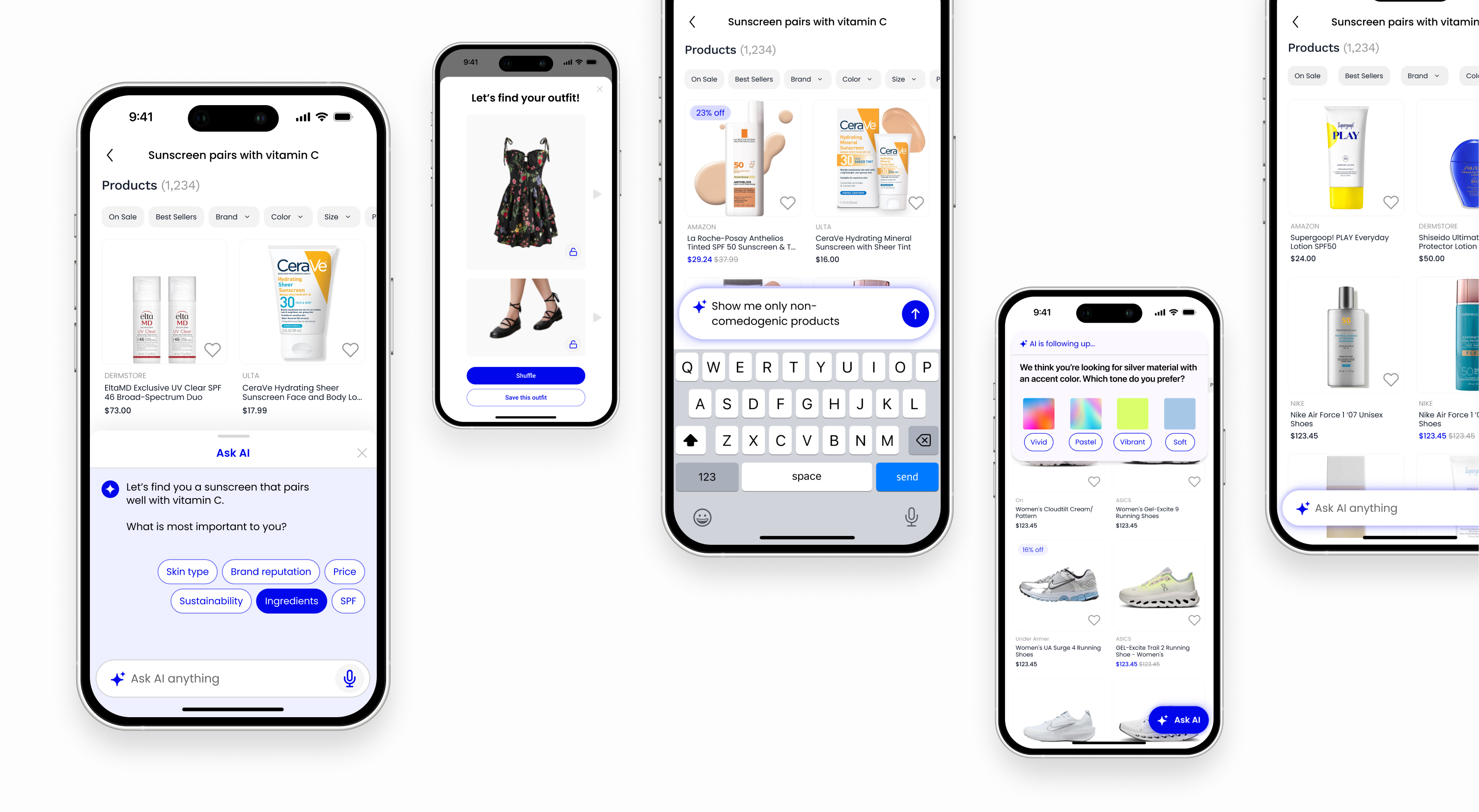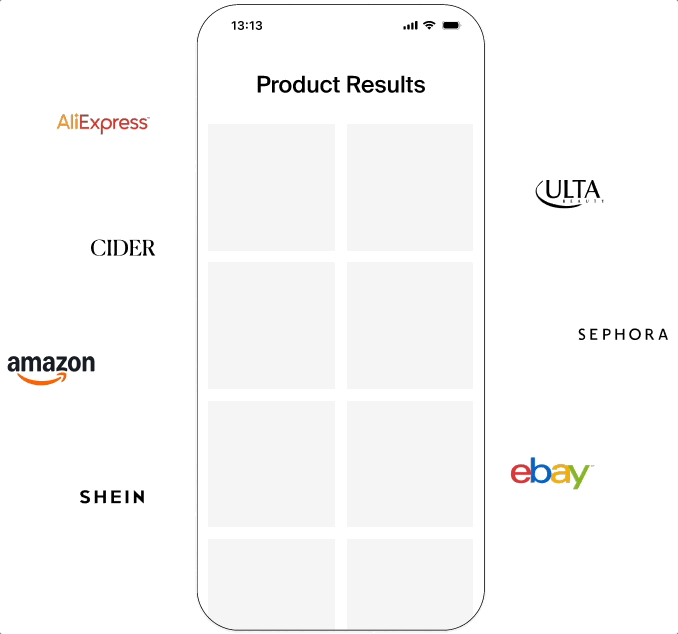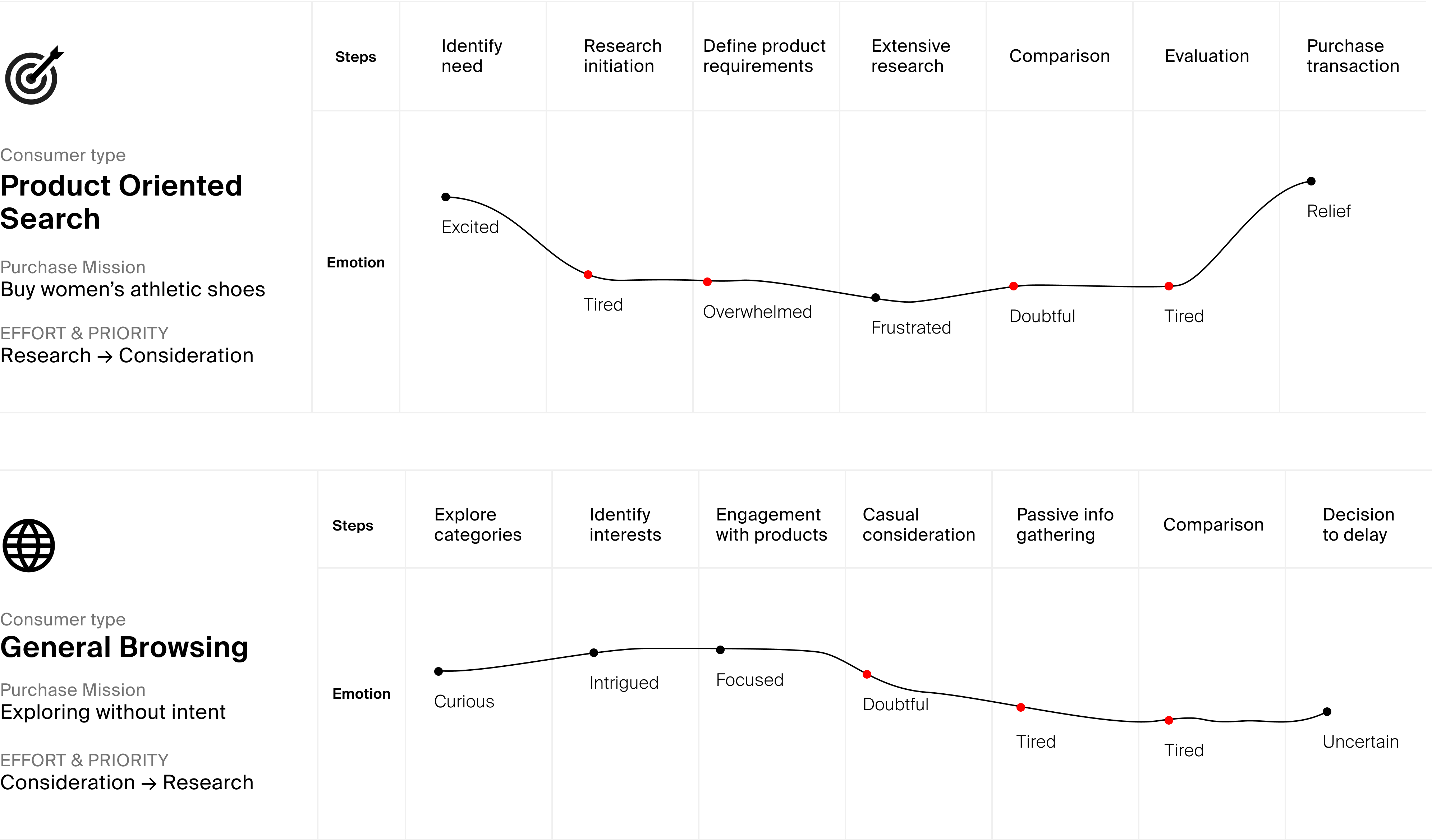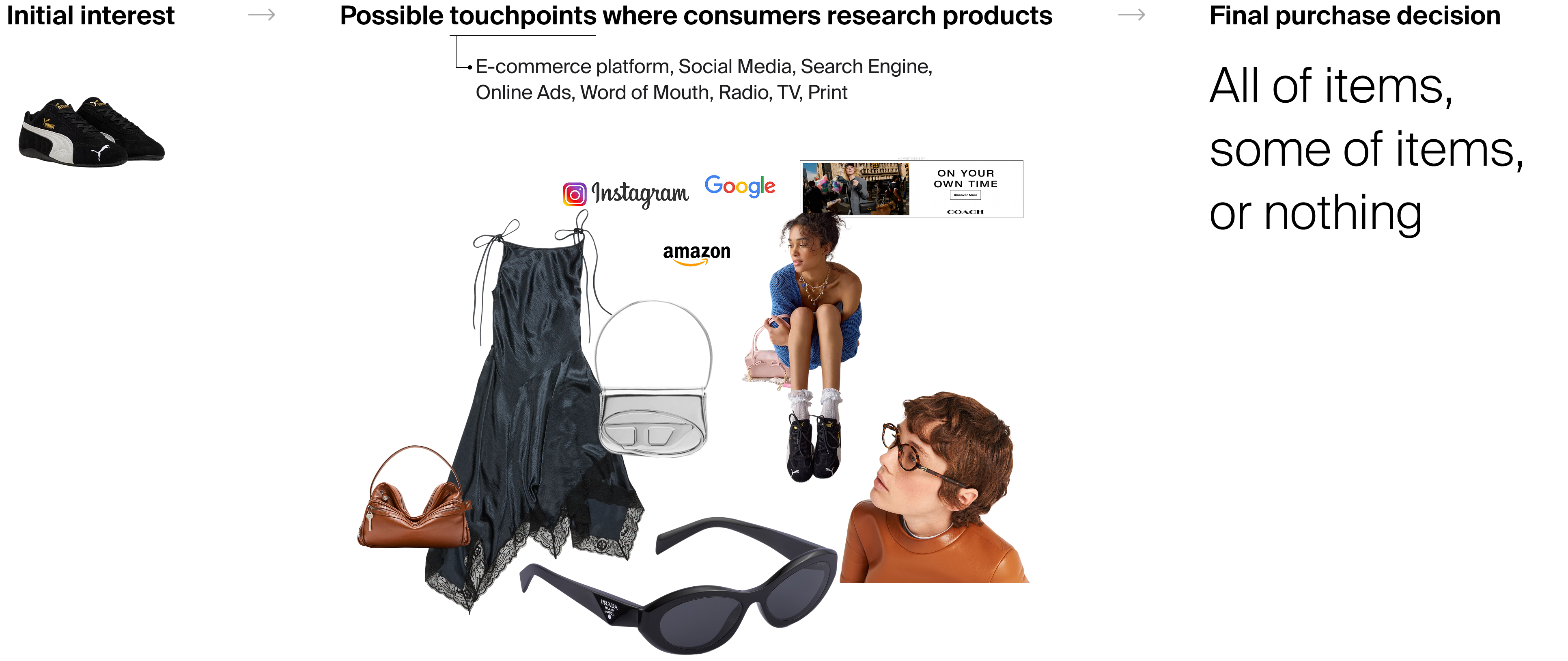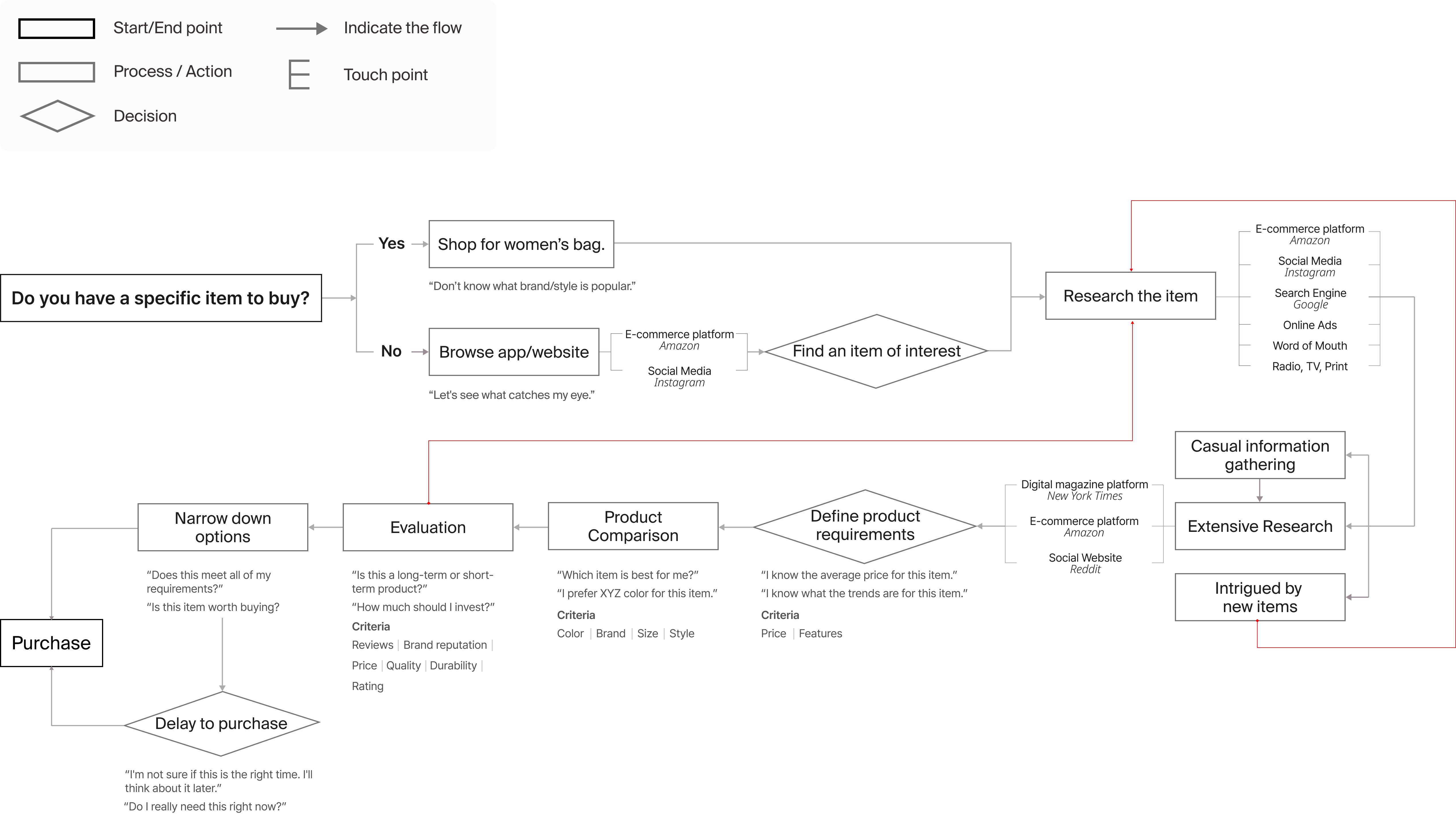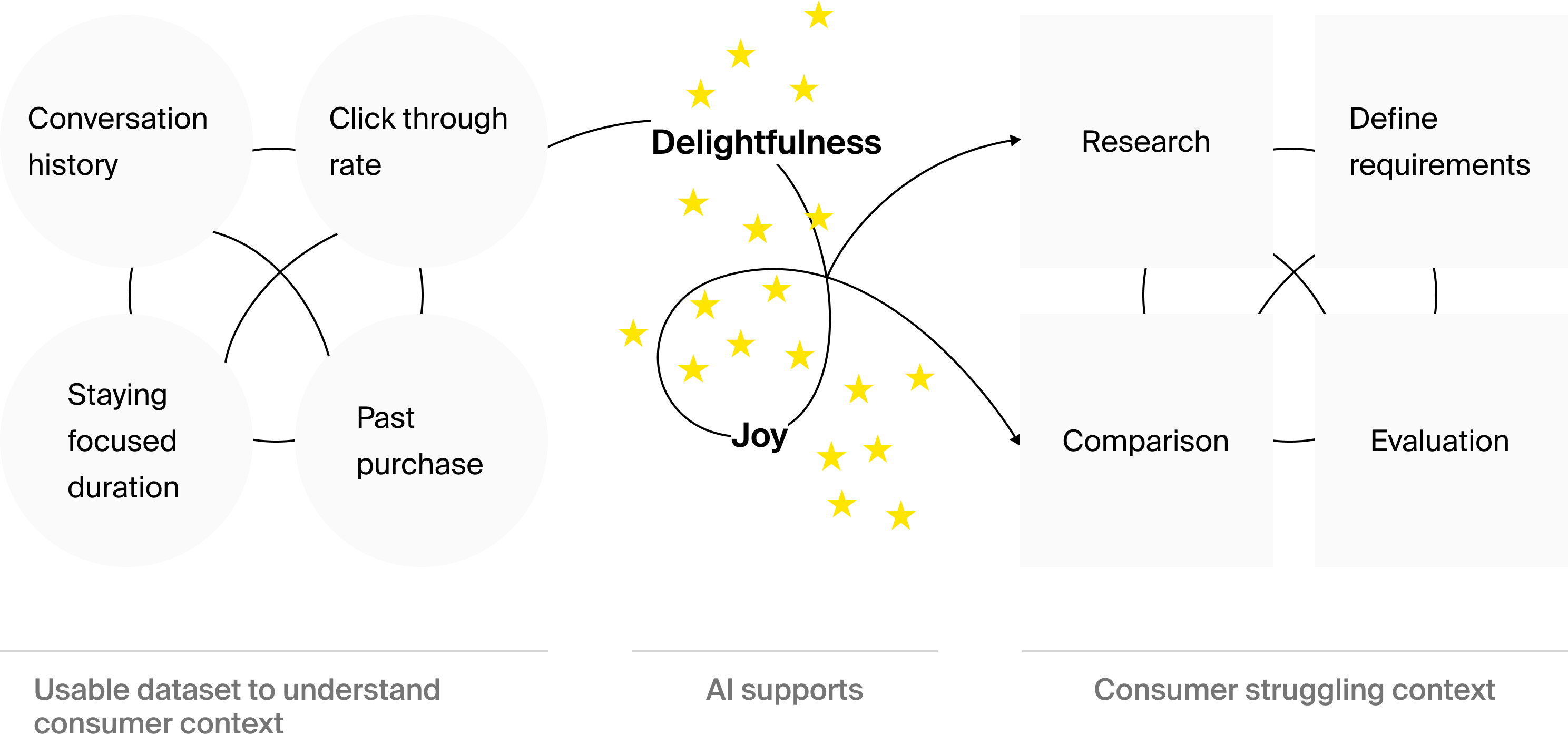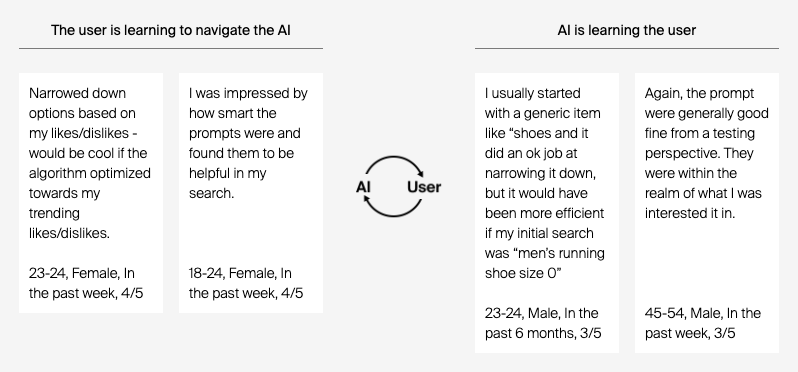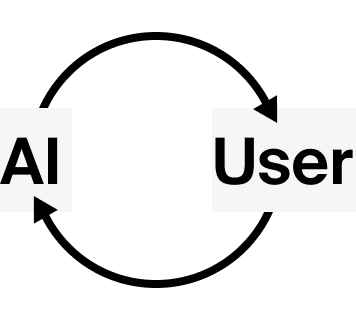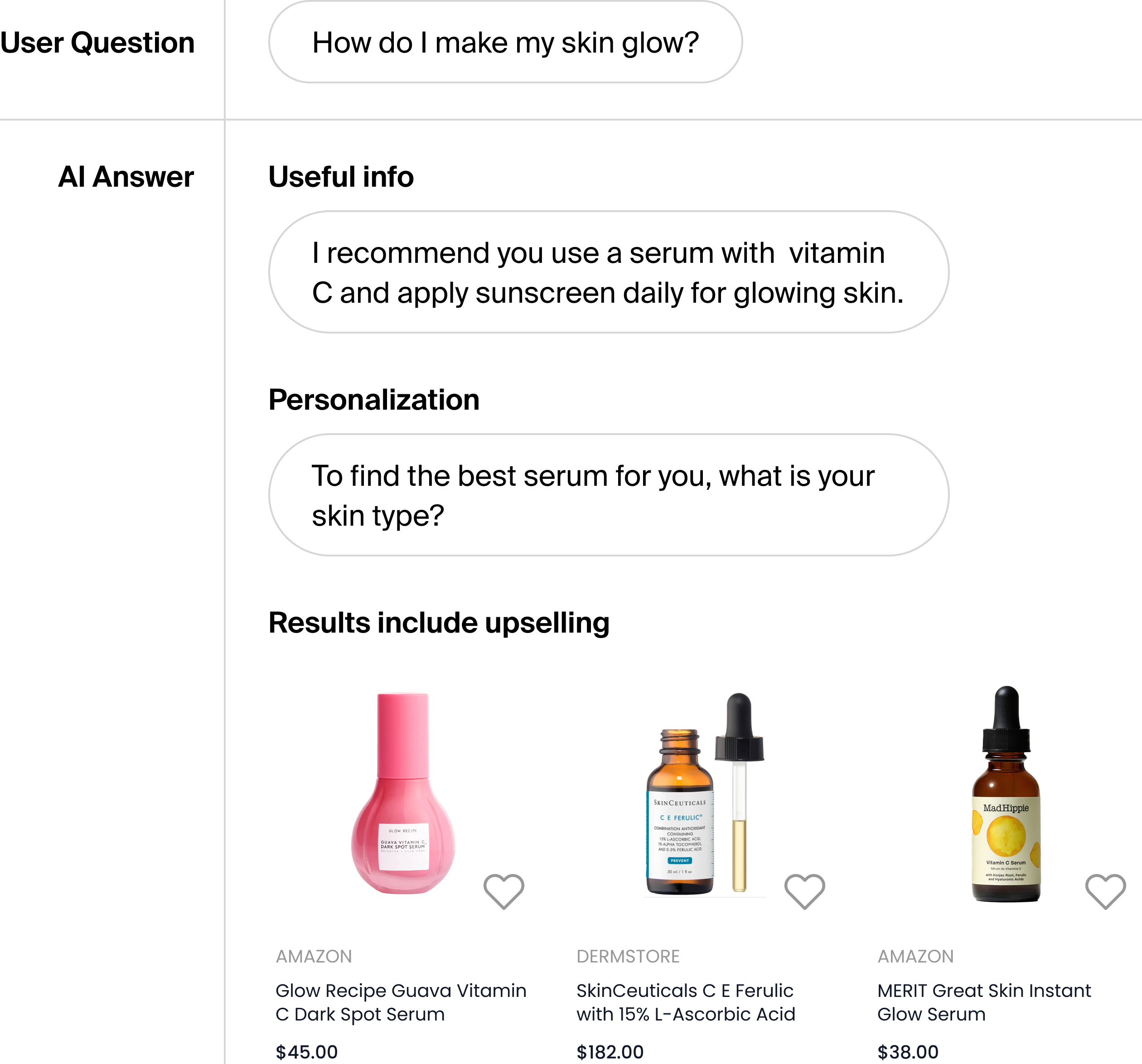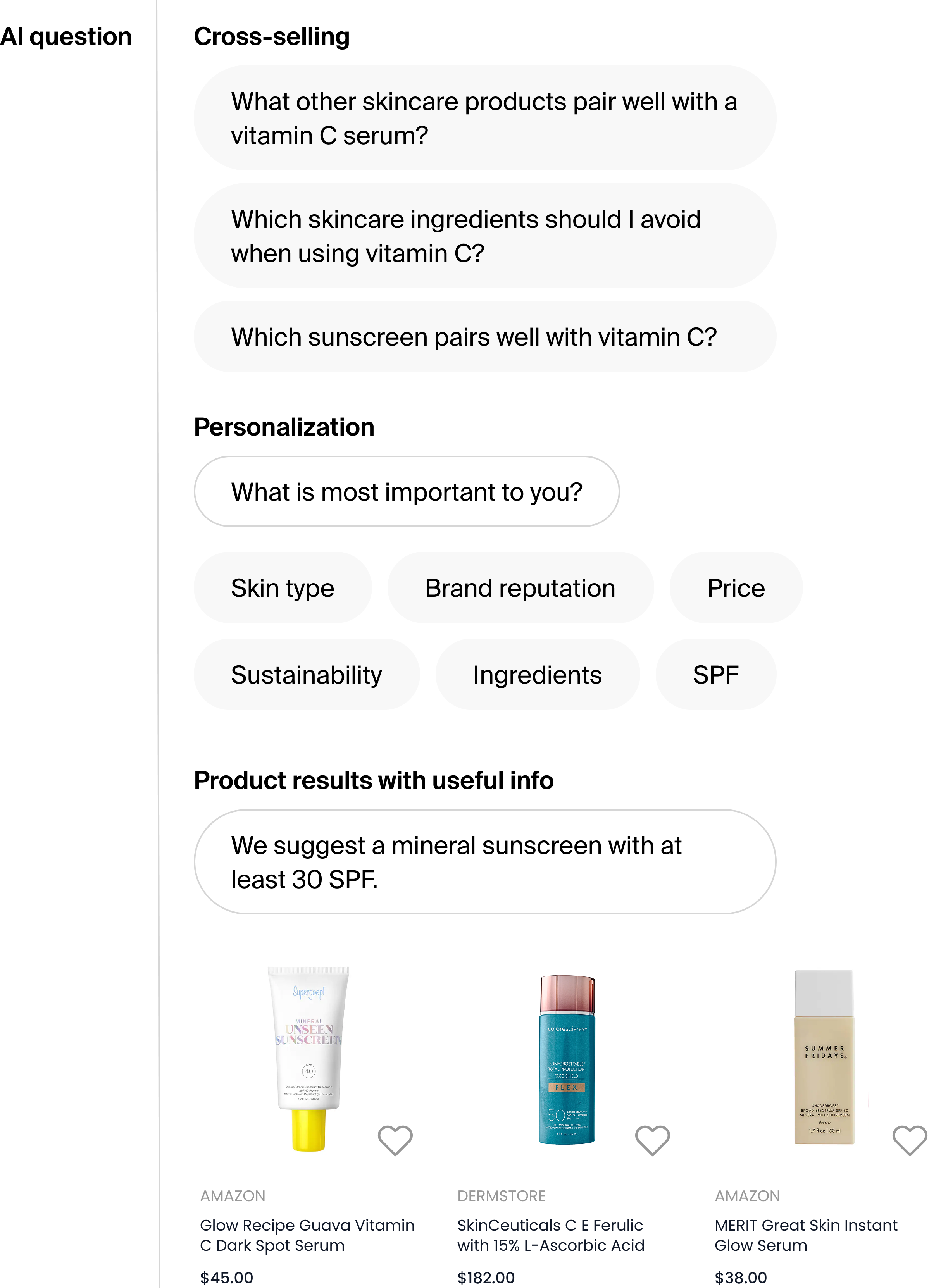Jobs To Be Done
Find cosmetic products that make skin glow, suited to my skin type.
Problem
Exhausted from compiling information on required product features and confused about what is necessary and which details should be prioritized.
How To Solve (use case)
AI provides research-based questions and options for answers to help users consider the required product features before making purchase decisions, making the search journey easier and smarter.
